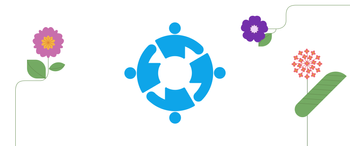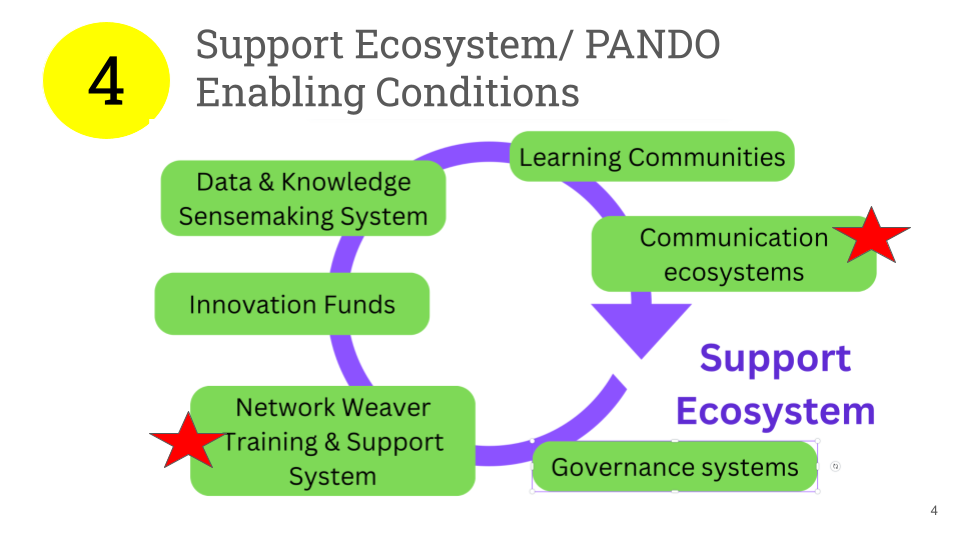On clarity, boundaries, and creating change
So, you want to make a change in the world. Yay! But where to begin? Before you consider all the dynamics of team health, a thoughtful strategy for collaborative communication can help your effort get rolling.
Some changes are simple: “I want to set up a carpool so that I use less gas to get my family where we need to be.”
Some changes are more complex: “I want to help improve access and infrastructure for transportation.”
Either way, one of the first steps in catalyzing change includes reaching out and communicating. Sending a clear message to a receptive audience is not only a skill for marketers. Excellent communication matters whether chatting with friends, addressing strangers, or speaking truth to power--it makes us better parents, siblings, friends, and colleagues. The choice of whose attention to attract, and when, is strategic, and can make or break a change effort. When in virtual spaces, without the context and signals of in-person conversation, clarity can be the difference between success and failure.

How do you best choose when and where to communicate with others when creating change?
We suffer from chronic information overwhelm. In today's “attention economy,”dark patterns, black hat marketing, and other forms of psychological manipulation abound); even input from well-meaning friends and colleagues can be a lot to take in. Inboxes, chat rooms, and to-do lists bulge to overflowing. In a networked world, producing more information per day than ever in history, strategy is key. As a change maker, you need to send the right signal, at the right time to even have a chance of being heard. Practicing clear, mindful communication respects the attention of others. It creates clarity and encourages trust. Habitual practice offers ways to strengthen your relationships by building collaborative communication skills.

Here are three strategic communication habits to cultivate:
1 - Notice the context.
What is the context of your communication? Are you speaking to a tight knit group or to a bunch of strangers who just met? Is what you are saying aligned with the purpose of that group? Where is the communication taking place (a group text, email, Slack)? What are the existing communication norms?
So many decisions about how to communicate come instinctively during in-person communication. In the analog world, the space makes context clear. In a coffee shop with friends we’ll say things we certainly wouldn’t from a stage to an audience of 500. In virtual spaces, clarity about what and how to communicate is not always so plain. We sometimes post messages meant for only a specific group of people in public channels, where they just get lost in the clutter. Or we toss random, irrelevant communication into focused spaces, which either gets ignored or sidetracts the whole group. Take a moment to consider the boundaries and purpose of the group you’re trying to communicate with. These create the context for that space--the virtual walls. Make sure your contribution aligns with and supports that purpose. Communication comes across better when you notice and consider context.
2 - Focus on your audience.
Who is your message for? Are you speaking to one person or many? Do you have the trust of the people you want to reach? Are you brand new to the group or in a position of power?
It can be hard to take the perspective of others, especially when the issue we’re communicating about is important to us. it's hard to fathom why others would not also want to pitch in. Even in the networked age, we still use communication tactics based on old broadcast models: he who shouts loudest to the greatest number of people gets heard. But social and collaborative communication is changing what people listen to. Shout too loud and too often and you're likely to get muted or unfollowed. In the networked age, we have to take time to listen and learn the perspectives and communication styles of the people we want to reach. Then we can shape our message, rhythms,and language specifically to our audience. When the listener’s needs are at the forefront, our communications will have the impact we want them to.

3 - Keep it simple.
What is the least that your audience needs to understand about what you are asking? How can you convey it clearly? What is your aim? Are you hoping to promote something? To simply offer useful information? To inspire curiosity and connection? To motivate a specific action?
If you aim for more than one of these, consider separating them each into shorter messages. This can help people who are interested reply or engage in the right place or way.
People use a variety of containers to communicate with a group: texts and chats, calls and discussion boards. And, of course, the dreaded wandering email thread. Group success in creating change hinges on human qualities: leadership, shared trust, clear purpose, and skillful communication. The collaboration tools we use (email, Slack, Zoom, etc.) can support or inhibit those qualities. Group texts needlessly alert everyone for every comment. Chat spaces lack clear boundaries and create pressure to read everything (thanks FOMO). Group calls need complicated calendar and time zone juggling, and, if missed, it can be very hard for others to catch up. Searching lengthy email threads to find that next action item or conversation eats away time and attention.
In this time of information saturation, we have to protect our own attention and the attention of others. These three collaborative communications habits can help you do that, while getting what you want to say across. Practice noticing context, considering your audience, and keeping your message simple.
We need better tools for collaborative communication, which is why we’re building Socialroots. Sign up for early access:






